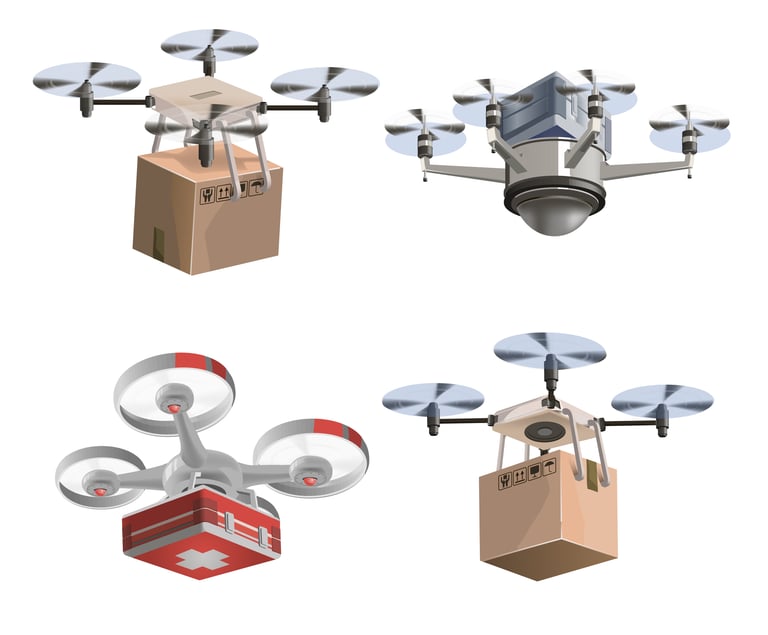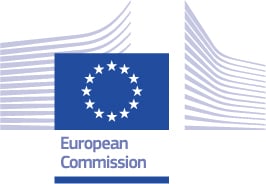Think about the multitude of new types of air vehicles, such as delivery drones and air taxis, that will soon be seeking access to the airspace, and the need for action becomes clear and urgent.
Our priorities are clear: further R&D and innovations to enable drone operations to be safe, equitable, ubiquitous and financial viable.


Social Acceptance
Drones are expected to increasingly influence our daily lives. The effects of public acceptance for new technologies has not always been smooth. The growing drone economy will poses new challenges to the public in terms of safety, security, respect of citizens’ rights, noise and visual pollution, transparency over what the drone is doing and who it belong. To shape the use of drones the understanding of the benefits –economic and social – and engaging the public in a dialogue should have to be promoted.
ATM/U-space convergence
The ultimate goal is a fully integrated ATM / U-space ecosystem without segregation between ATM users and U-space that enables efficient and safe traffic management operation. The definition of fully integrated ATM / U-space CONOPS , the concept of information exchange and requirements, the relevant solutions to cover seamless operations inside and outside controlled airspace should have to be examined and defined to address capacity, safety and efficiency of all operations.
Advanced U-space services
Urban Air Mobility
Urban Air Mobility (UAM) ecosystem that enables on-demand, highly automated, passenger or cargo-carrying air transport services with particular reference to the urban, suburban and interurban environments, where aviation is often highly regulated today should have to be investigated to address urban airspace architecture and management, characteristics of low-level urban environments, relevant ground and air risks to enable to manage potentially hundreds, if not thousands, of UAM movements per hour over and around.
Advanced U-space services requires the setting up of fundamental enablers for scalable, flexible and adaptable services. The technologies to enable performance-based communications, navigation and surveillance (CNS) services in U-space should have to be identified and assessed in operational environments to address strategic/tactical conflict resolution, advanced detect and avoid (DAA) systems, mobile telecommunication infrastructure and its suitability for U-space, multiple U-space service providers interaction, geofencing services.
Vertiport
Regulatory
The management of traffic for drones should be ensured through the U-space. U-space regulatory framework should have to create and harmonise the necessary conditions for manned and unmanned aircraft to operate safely in the U-space airspace, so as to prevent collisions between aircraft and to mitigate the air and ground risks. The U-space regulatory framework, supported by clear and simple rules, should permit safe aircraft operations in all areas and for all types of unmanned operations.
Viable drone alone won’t elevate the new UAM ecosystem, the ground infrastructure necessary to support and enable scaled people and cargo transportation in the urban, suburban and interurban environments is not yet in place . Vertiports – the take-off and landing solutions for UAM to support the transportation of passengers and cargo – should have to be defined to address operational environment conditions as well as all contingencies, ensuring safe, effective, and resilient flight operations.
PUBLIC PRIVATE PARTNERSHIP (PPP)
Instruments to address key challenges
Transforming the infrastructure that supports Innovative Aerial Services cannot be done by any one organisation or country. It requires close collaboration between all the stakeholders that contribute to it, from the European and national decision-makers that regulate it, the organisations and staff that operate it, to the academic and industry stakeholders that research, design and manufacture it.
A public-private partnership strongly linked to policy and regulation through an institutional partnership offers the best means to coordinate all the stakeholders, pooling the critical mass of resources and expertise needed to deliver change.
To accelerate the research and innovation delivery, the SESAR 3 JU is co-funded by the European Union through the Horizon Europe research and innovation programme and industry as follows:
Horizon Europe - EUR 600 million
Eurocontrol – up to EUR 500 million (in-kind and financial contributions)
Industry - EUR 500 million minimum (in-kind and financial contributions)
In addition, the Digital European Sky programme will benefit from funding for its demonstrators from the Connecting Europe Facility (in coordination with CINEA) to the value of at least EUR 200 million of an inclusive, resilient and sustainable Digital European Sky.





